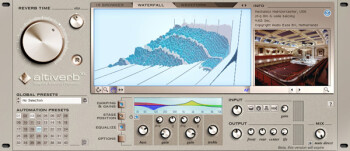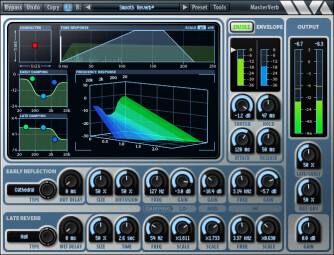Unless you're living in a tent in the middle of the desert, you are exposed to numerous natural reverberations every day. Our ears perceive reverberations that our brain interprets automatically to inform us about the shape, size and nature of the place where we are. Close your eyes and listen carefully. You'll notice that the sense of hearing provides us with lots of information we usually don't really pay attention to.
For music recording, you’ll rarely have a room whose acoustic characteristics you’ll want to keep in the final production. That’s why we usually choose a room with “neutral” acoustics and put the mics as close as possible to the sources in order to capture the direct signal of the instruments and discard the reverberated signal. Later on, during mixdown, you’ll use a reverb processor to put the instruments inside a given acoustical environment. And to create this environment, it’s a good idea to know what are the elements of reverberation.
Early reflections
In a closed room, the first thing that a listener hears (when in front of a sound source) is the sound coming directly from the source. He then perceives the reflections of this direct sound. These early reflections are the result of changes in direction of the sound waves that come back to the listener after hitting the walls, ground and/or ceiling.
Early reflections provide us a lot of information: depending on their time distribution, their decrease and their frequency response, they tell us about the dimensions and damping degree of the room. They even inform us about the nature of the surfaces (walls, ground, ceiling).
In a reverb processor, the “early reflections” parameter generally determines their level and their number.
Reverb tail
The reverb tail is the diffuse part of reverberation. Unlike the first reflections, which are generated in any room (except for an anechoic chamber), the reverb tail, also called diffuse sound field, is generated only in rooms that are big enough. This resonance appears after the first reflections and it gives us information about the size and the shape of the room.
Several parameters affect the reverb tail:
- The rise time corresponds to the delay of the reverb tail with regard to the original signal. In a reverb processor, the corresponding parameter is called “pre-delay”.
- The reverb tail is audible during a certain time, depending on how rapidly it decreases. In a reverb, the corresponding parameter is called “time” or “decay time”. But you also have to add to this the fact that the reverb tail doesn’t necessary decrease in a linear way. In a reverb processor, the corresponding parameter is called “decay”. Depending on the processor, this parameter may allow you to create acoustic spaces that do not exist in real life, for example by cutting the reverb tail abruptly (gated reverb).
- Depending on the properties of the room (size and absorption ratio), first reflections may also contribute to generate some of the reverb tail. The more this happens, the less the reverb tail is intelligible. In a reverb processor, the corresponding parameter is called “Diffusion”.
- Reverb processors often offer a “size” parameter that affects the time behavior of early reflections and the reverb tail in different ways, depending on the reverb type.
Level parameters
Reverb processors generally offer additional parameters to allow you to adjust the level of the early-reflections, the tail and the output of the processor. Most processors also provide a balance setting to adjust the amount of direct signal (dry) and reverberated signal (wet).
Damping parameters
As we mentioned before, reverberation gives us valuable information about the nature of the room surfaces (walls, ceiling, ground) where the sound is being reflected. This aspect corresponds to the “damping” parameter in reverb processors. Generally, you have the possibility to set a different damping ratio to different frequency bands. Some reverb processors go “beyond reality” and offer multiplying ratios.
Frequency response
The shape of the room and the properties of its surfaces (walls, ceiling, ground) color the whole reverb signal (the early reflections and the tail). That’s why many reverb processors feature an EQ section that allows us to color the frequency response of early reflections and the reverb tail, together or separately.
Reverb type
Since we started talking about natural reverberation and continued to present the parameters of a reverb processor, we left a crucial factor out: the reverb type, in other words the algorithm and impulse response loaded in the processor. It can be the simulation of real acoustic spaces, the simulation of a historic reverb (a plate or spring reverb, a famous vintage processor) or an unreal reverberations (gated or reversed reverb). More to come soon…



